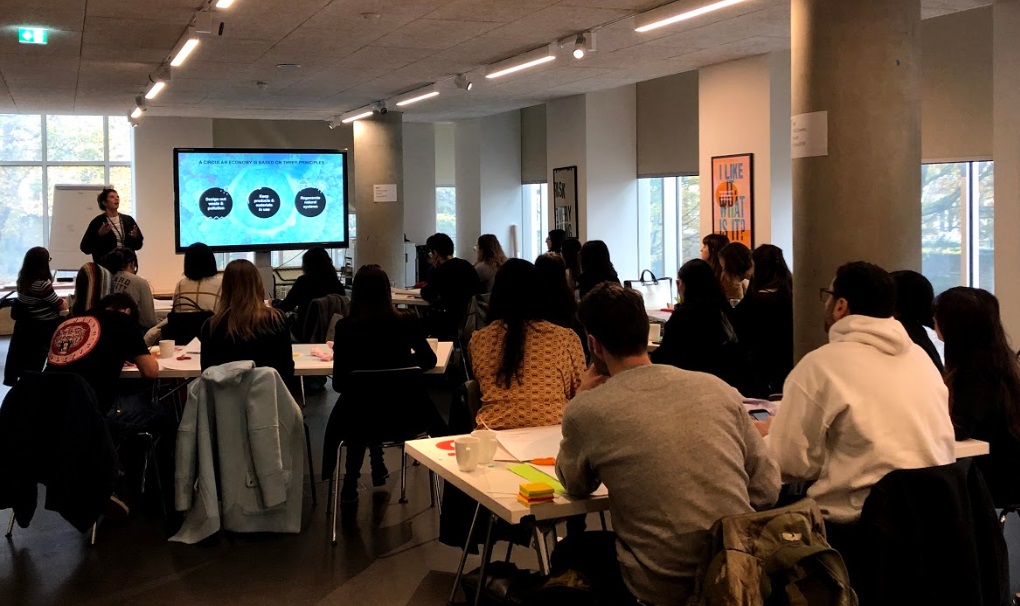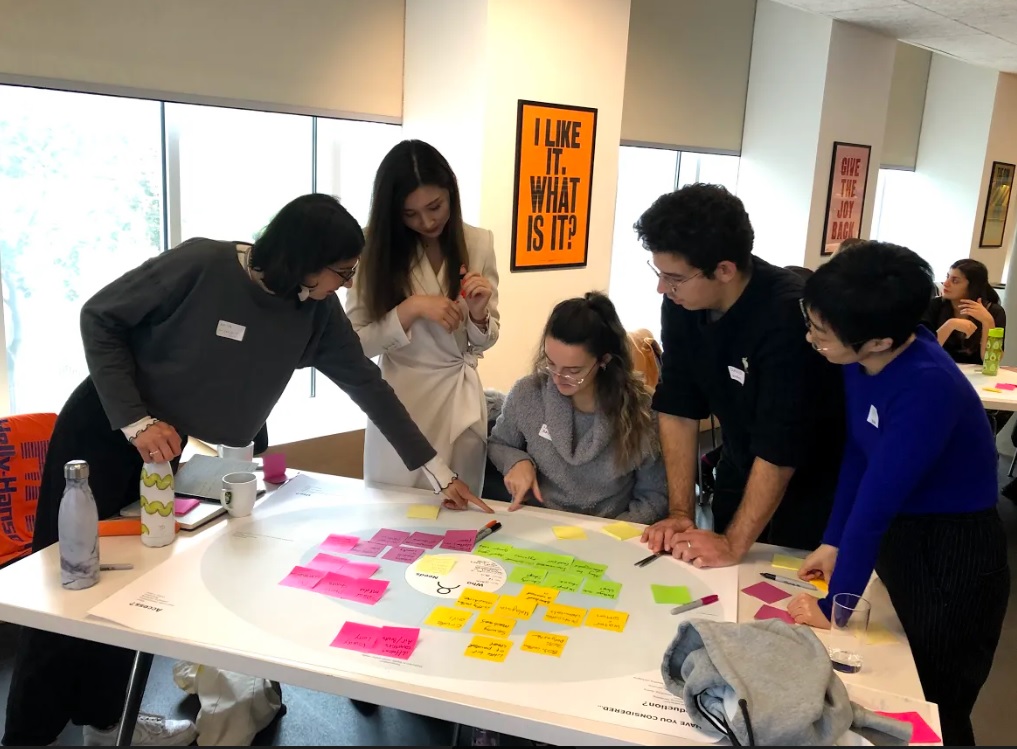How might we use circular design principles to innovate the way we produce, use and access everyday clothing items? Nat Ortiz shares insights from a series of workshops with design students to explore fashion in a circular economy.
Our love of fashion fuels a global industry, employing millions around the world. But this current system is impacting on our planet in many negative ways. Circular economy principles offer a way to change this: instead of our ‘take, make, waste’ model, we should be finding ways to make clothes last longer and stay in use, as well as ensuring that materials don’t damage the environment and can be recovered and used again. To achieve this, we need to mobilise thousands of designers and creatives around the world to help change the current system. The RSA Student Design Awards ‘Make Fashion Circular’ brief, developed in partnership with the Ellen MacArthur Foundation, challenges university students and recent graduates to innovate the way we produce, use and access everyday clothing items using circular design principles.
To bring the brief to life, we ran a series of workshops in London, Edinburgh and online and invited a diverse group of students to exchange, experiment and explore positive interventions in the fashion system. When engaging students and teaching circular design principles, we found three key things helpful.
1. Bring theory to life
We kicked off the workshops by inviting experts to share with students what circular design is. Existing theory and diagrams explaining circular design are complex and can be hard to understand – so what truly made a difference for the students was providing a set of examples of initiatives that are already embedding circular design principles from a product, service and user engagement perspective. These examples helped illuminate the theory and allowed for discussions on current innovation gaps that make closing the loop a difficult job. For example, the challenge of separating fibres from blended textiles such as polyester and cotton in order to be recycled, or stopping microplastics shedding during washing processes. For a taste of this, you can download the workshop slides, take a look at the full set of resources in our brief toolkit and watch the launch video of our Make Fashion Circular brief.

2. Make it tangible
For the more practical and creative part of the session, we gave students a range of garments, such as a pair of jeans, a jumper, a blouse and a sweatshirt. This made it easier for the groups to focus on the user and the human needs that each garment fulfils; for example, a babygrow might be designed to provide babies with warmth and protection and might be worn by a baby for a total of three months. Having the garment on the table made it easier for students to explore a range of aspects, such as the construction of the piece, its materials, and the care and manufacturing information on its label. We used this canvas to provoke questions about the garment and to look at the fashion system, both as it currently stands and as it could be in a circular economy. We also used the Circular Design guide and a storyboard to share with the group and collect feedback.

3. Mix it up
A unique aspect of the workshop design was intentionally including participants from a range of disciplines. This might sound like an obvious approach, but we found that students rarely get to interact with people from other courses. Circular design calls for a systemic approach, so we curated groups which included material experts, fashion designers, communications and marketing experts, service designers, business students, fashion buyers and others. Combining perspectives and expertise really made a difference to the richness of the discussions and ideas that were brought to the table and enhanced the understanding of the huge range of factors which need to be considered when addressing circular design.
The purpose of the workshops wasn’t for the students to come up with finished proposals for the brief, but to provide a space to exchange ideas and better understand circular design and our approach to evaluating design. Exploring different ways to intervene along the lifespan of a garment, understanding the problems, and exchanging ideas with others allowed students to question and challenge their assumptions and to leave the session inspired by the potential of better fashion system that is considered, regenerative and positive by design.
Hear from some of the workshop participants:
Find out more about the Student Design Awards.

Be the first to write a comment
Comments
Please login to post a comment or reply
Don't have an account? Click here to register.